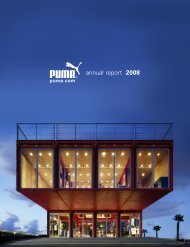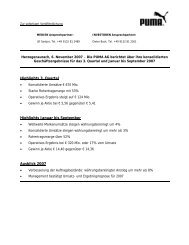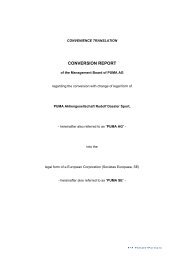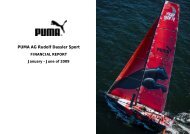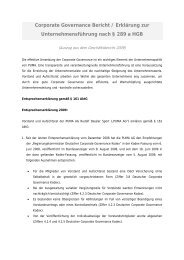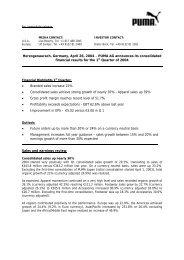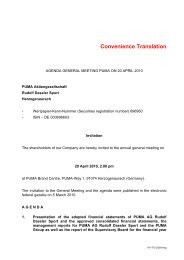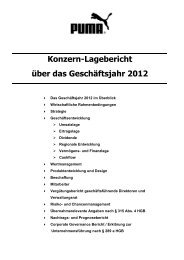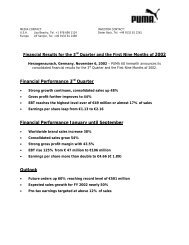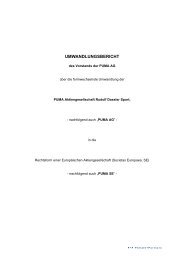PUMA.Safe Environmental Handbook Volume 1 - About PUMA
PUMA.Safe Environmental Handbook Volume 1 - About PUMA
PUMA.Safe Environmental Handbook Volume 1 - About PUMA
Create successful ePaper yourself
Turn your PDF publications into a flip-book with our unique Google optimized e-Paper software.
process equipment and floors (after sweeping or other dry cleanup). Some mills have reduced operating costs<br />
substantially by installing water reuse systems.<br />
Some dye-houses have successfully implemented heat exchangers in their wastewater stream and others realized a<br />
closed water cycle by filtering and re-using their process water.<br />
Suggestion for Pollution Prevention for Textile Mills- A Check List -<br />
• Store dry materials, such as bags of salt or dye drums, off the floor and away from liquids by placing catch pans<br />
beneath the material.<br />
• Plug floor drains in material storage areas.<br />
• Build curbs around storage areas to keep spills in and water out.<br />
• Remove water supplies from storage areas.<br />
• Use dry cleanup methods; provide brooms, vacuums, and absorbent.<br />
• Provide suitable work areas, handling tools, and training to operators so they can avoid creating spills.<br />
• Provide recipes for each mixtures.<br />
• Provide measuring equipment, in addition to recipes, to operators.<br />
• Optimize chemistry; correct temperature can reduce the use of salt and dye.<br />
• One size does not fit all; use small volume equipment for small production runs.<br />
• Place spring-loaded nozzles or timers on all water supplies to turn off when not used.<br />
• Select valve and piping material to minimize corrosion and leaks.<br />
• Avoid filling process equipment with water from unmetered hoses; place meters on water supplies feeding<br />
process equipment.<br />
• Use counter current or multi-stage rinsing to reduce water use.<br />
• Reuse wastewater from other processes that do not require high quality water.<br />
• Test incoming water supply for minerals or chemicals that negatively affect the process.<br />
Figure 11: Example of counter current rinsing in fabric dying process<br />
31





